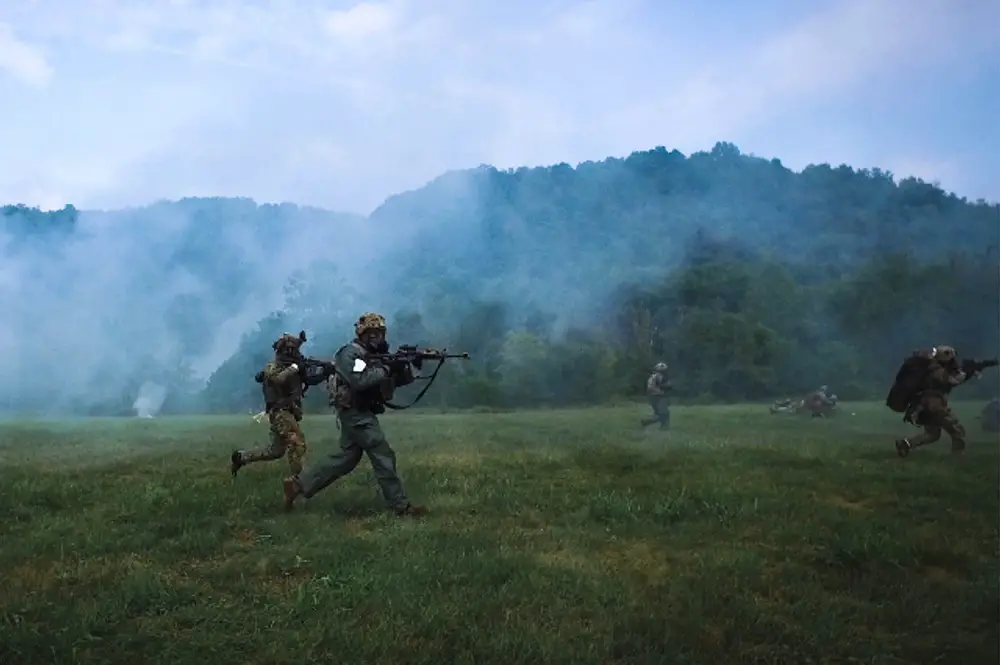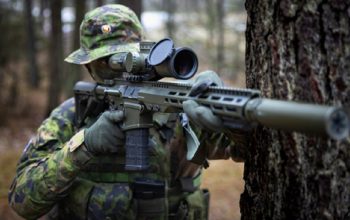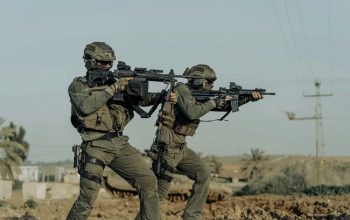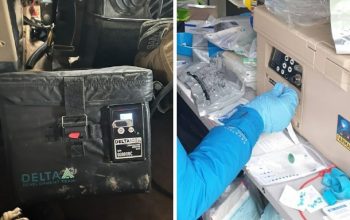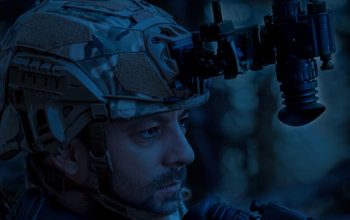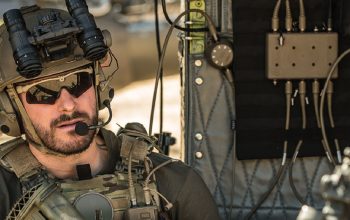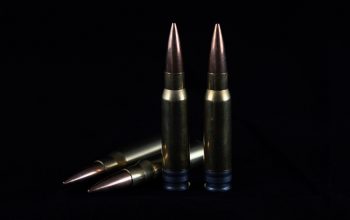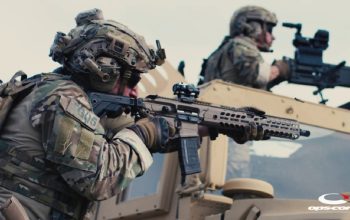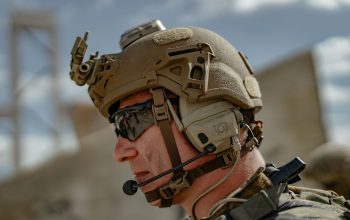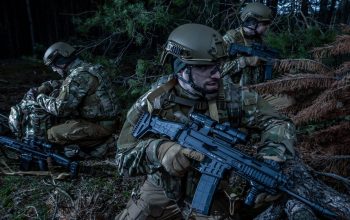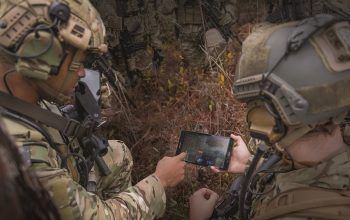Through collaboration and innovation, the Defense Threat Reduction Agency has integrated its powerful, hazard-awareness-and-response tools into the Android Tactical Assault Kit (or the Android Team Awareness Kit, ATAK). ATAK is a digital application available to warfighters throughout the DoD. Built on the Android operating system, ATAK offers warfighters geospatial mapping for situational awareness during combat — on an end-user device such as a smartphone or a tablet. U.S. forces use ATAK to self-identify their locations, and their enemy’s location, to visually communicate their movements to friendly forces in the area. The software has successfully aided in search-and-rescue and natural disaster responses, such as coordinating the relief efforts following Hurricane Florence. Warfighters can now use ATAK to guide themselves to safety when confronted with a release of chemical and biological agents and radiological and nuclear threats (CBRN).
Warfighters rely on digital maps and other data to guide their mission. However, a mission requires additional data when warfighters are confronted with a release of CBRN. Warfighters need to know the weather conditions in real time (e.g., wind speed and direction, stability, precipitation) to understand the potential for agent dispersal and spread. They also need to know the type of agent released, monitor their personal vitals to assess their exposure to the agent, and find a route to safety. DTRA has digital tools to help warfighters defend against CBRN, but they were often housed as stand-alone applications and not embedded in platforms regularly employed by warfighters outside of the CBRN community.
ATAK can connect to sensors on many platforms (e.g., satellites, drones, smartwatches) and has many plugins that warfighters can download to customize their operating environment, depending on their role or mission. ATAK’s software architecture allows plug-ins to share information with other plug-ins or applications on the end-user’s device. With DTRA’s contribution, ATAK now includes these three CBRN plug-ins: 1) CBRN Effects, 2) CBRN, and 3) Filter Times.
The first plug-in, CBRN Effects, adds two capabilities to ATAK: real-time hazard prediction and vehicle navigation for CBRN events. The plug-in optimizes DTRA’s Hazard Prediction and Assessment Capability to run on an end-user device in disconnected (without an internet connection) environments. When the plug-in is connected to the internet, it incorporates DTRA’s Meteorological Data Server to provide warfighters with real-time weather — from domestic to global, depending on the mission — to characterize the dispersal and spread of chemical and biological warfare agents following a release. The CBRN Effects plug-in also makes use of an existing ATAK plug-in, the Vehicle Navigation System (VNS). With VNS, the CBRN Effects plug-in offers warfighters a complex routing tool that accounts for contamination and exposure, in addition to travel time, and advises the warfighter on the optimal paths to take for safety.
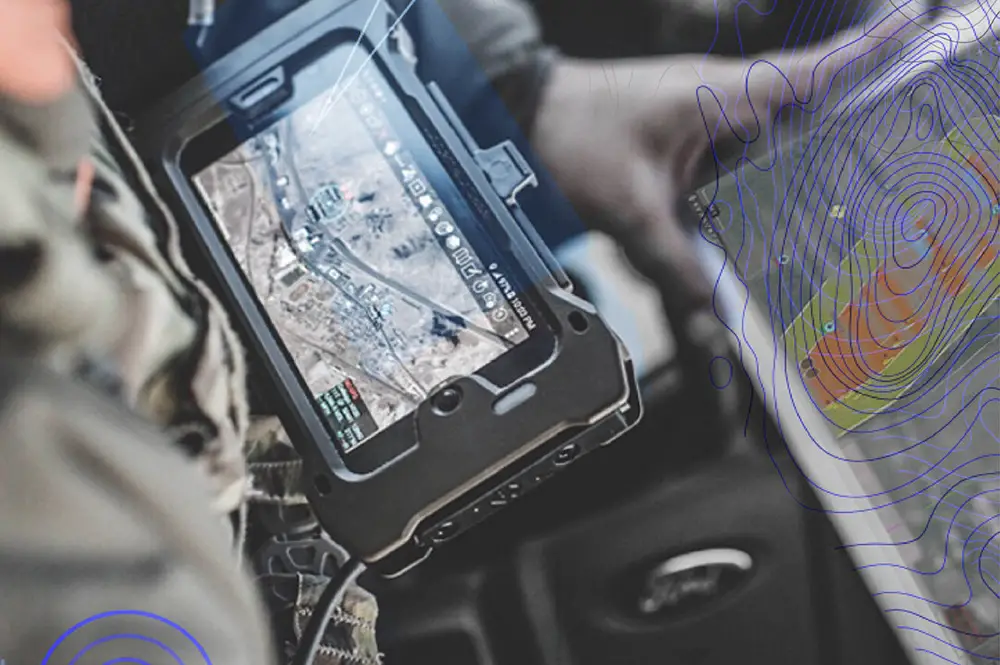
To add the second plug-in, CBRN, DTRA collaborated with the U.S. Army Comba Capabilities Development Command Chemical Biological Center (CCDC CBC) to implement the U.S. Army’s Integrated Sensor Architecture (ISA) into ATAK. U.S. Army’s ISA is used across the DoD, so DTRA and CCDC CBC built upon ISA to include sensors to capture CBRN events. ISA seamlessly integrates different sensor technologies to give warfighters the data they seek. For example, ATAK provides a single interface for viewing and controlling different CBRN-sensing technologies, whether that is a wearable smartwatch that measures a warfighter’s vitals (e.g., heart rate) or a device mounted on a drone to detect chemical warfare agents.
The third plug-in, Filter Times, addresses what warfighters have long asked for: real-time guidance on how long they should wear masks and assume a mission-oriented protective posture after a CBRN release. ATAK offers this guidance through the Filter Times plug-in, which instructs the warfighter when to stay near the ground, when to seek immediate help, and when to avoid contamination.
Warfighters positively evaluated the Filter Times and other CBRN plug-ins at the 2019 Chemical and Biological Operational Analysis (CBOA) event, where warfighters evaluated several technology prototypes for their utility in chemical and biological defense. Warfighters reported that the CBRN capabilities in ATAK are useful and easy to use with minimal training.
Overall, the U.S. armed forces and their interagency and coalition partners value ATAK and the common operating picture it provides. DTRA continues to develop CBRN-specific plug-in capabilities to support warfighters on the battlefield.
